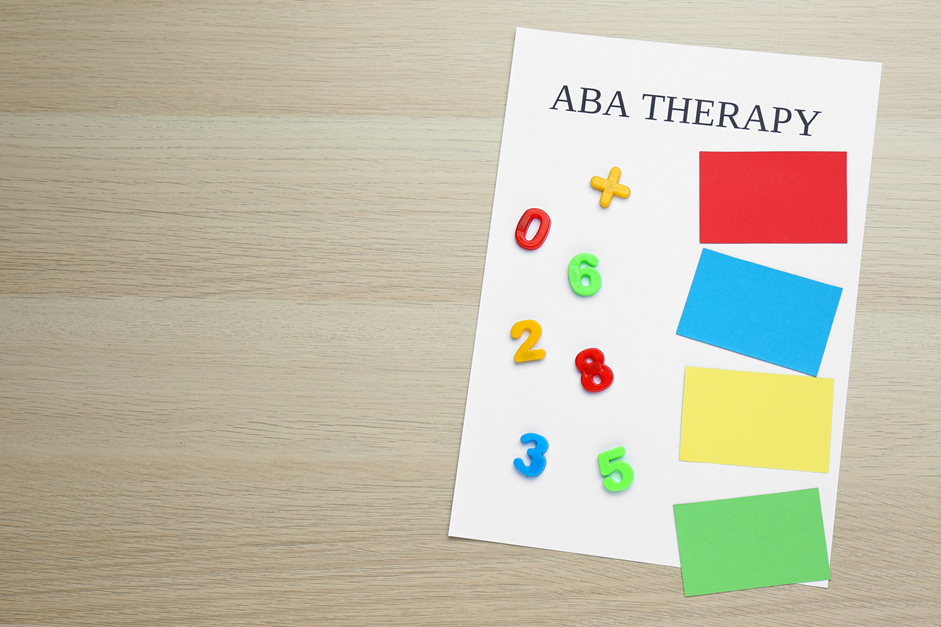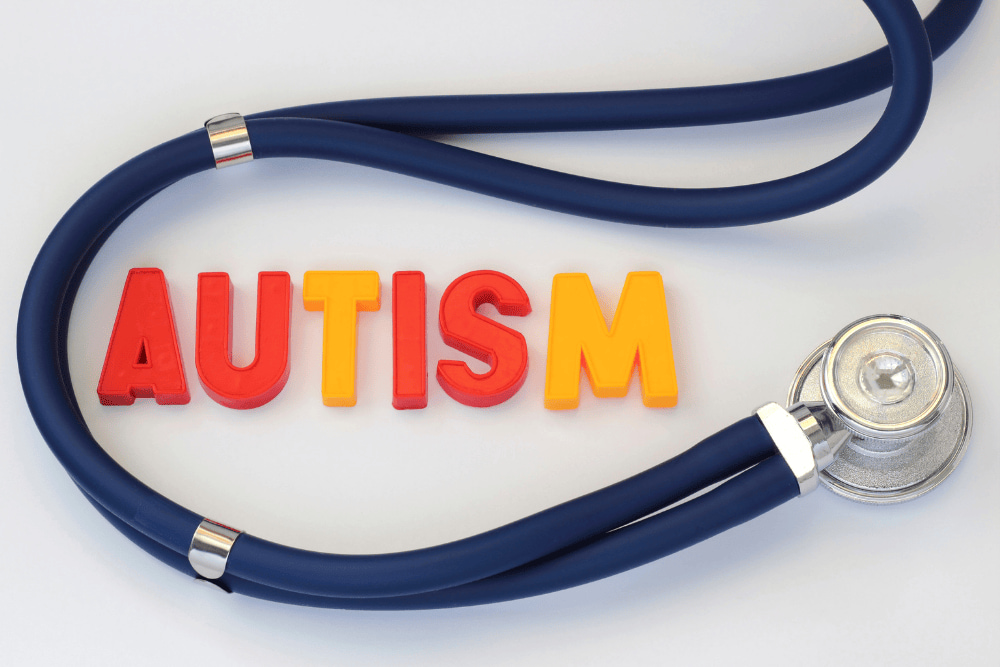Understanding ABA Therapy
Principles of ABA Therapy
Applied Behavior Analysis (ABA) therapy is a scientifically validated approach that focuses on improving specific behaviors by using various techniques. One of the core principles of ABA is positive reinforcement. This strategy encourages individuals to repeat desired behaviors by following them with something valued, such as praise, toys, books, or access to enjoyable activities like visiting a playground. Over time, this method promotes positive behavior changes [1].
A critical component of ABA therapy is its data-driven approach. Practitioners collect and analyze data to identify behavioral patterns and measure progress. This structured methodology aids in personalizing interventions for individuals' unique needs, making ABA therapy highly effective.
Benefits of ABA Therapy
ABA therapy can be effectively implemented at home by parents, providing numerous benefits for families and children. Some key advantages include:
- Accessibility: ABA programs can be conducted in familiar environments, making it easier for children to engage and learn.
- Tailored Learning: Parents can customize strategies to match their child's preferences and daily routines.
- Wide Range of Materials: Common materials for ABA therapy at home may include:
- Visual session schedules
- Timers for self-management
- Choice boards
- Token systems for feedback and motivation (Autism Connect)
ABA therapy programs have been successfully employed to assist children with autism and related developmental disorders since the 1960s [1]. This longevity demonstrates its effectiveness and adaptability in various settings, including home-based autism therapy and in home autism support services.
Materials for ABA Therapy at Home
Creating an effective environment for ABA therapy at home involves utilizing various materials that support learning and behavior modification. Two essential categories of materials are visual tools and schedules, as well as interactive learning materials.
Visual Tools and Schedules
Visual tools play a vital role in ABA therapy, as they help children understand and follow routines effectively, and manage tasks. Here are some commonly used visual tools:
- Visual Session Schedules: These display the sequence of activities or tasks in a visual format, aiding the child in anticipating what comes next. This can ease transitions between activities.
- Timers for Self-Management: Visual timers are particularly useful for individuals on the Autism Spectrum and those with ADHD. They help reinforce time-sensitive tasks by providing visual cues for time remaining.
- Picture Exchange Communication System (PECS): This system allows children with communication difficulties to exchange pictures to express their needs and desires, promoting functional communication.
- Token Systems: These involve providing tokens as a form of positive reinforcement, rewarding desired behaviors during sessions.
Below is a summary of typical visual tools used in ABA therapy at home:
Visual ToolPurposeVisual Session ScheduleHelps anticipate transitions and routinesVisual TimerAids in time management and task completionPECSFacilitates communication through picture exchangeToken SystemProvides feedback and reinforcement for positive behaviorInteractive Learning Materials
In addition to visual tools, interactive learning materials are essential for engaging children during ABA therapy sessions. These materials promote active participation and reinforce learning through play. Common interactive materials include:
- Peg Board Puzzles: These encourage fine motor skills and problem-solving.
- Building Blocks: Great for fostering creativity while also supporting spatial awareness.
- Flashcards: Useful for learning vocabulary, numbers, or social skills.
- Matching Cards/Toys: Fun way to enhance memory and recognition skills.
- Board Games: Teach turn-taking, social interaction, and strategy.
- Worksheets: Reinforce concepts taught during sessions and provide documentation of progress.
Here’s a table summarizing typical interactive materials used in ABA therapy:
Interactive MaterialPurposePeg Board PuzzlesEnhances fine motor skills and problem-solving abilitiesBuilding BlocksEncourages creativity and spatial awarenessFlashcardsSupports vocabulary and skill learningMatching Cards/ToysEngages memory and recognition capabilitiesBoard GamesImproves social skills and strategic thinkingWorksheetsReinforces learning concepts; tracks progressUsing a combination of these components allows parents to create a personalized ABA therapy experience that aligns with their child's unique needs. By modifying materials based on a child's behavioral and developmental requirements, parents can effectively support their child's progress in the comfort of their home [3]. For more techniques and strategies, consider exploring our resource on aba tactics or behavioral therapy for autism at home.
Implementing ABA Therapy at Home
Implementing ABA therapy at home can be a transformative experience for both children and their families. By employing personalized strategies and understanding the crucial role of parents, the effectiveness of therapy can be enhanced significantly.
Personalized Strategies
Personalized strategies are essential for successful ABA therapy at home. Each child's behavioral and developmental needs are unique; therefore, materials and techniques used during therapy are modified accordingly. A board-certified behavior analyst (BCBA) typically designs and oversees these individualized programs, assessing skills and preferences to establish specific treatment goals tailored to each child with autism spectrum disorder (ASD) [1].
The implementation of personalized strategies can include:
- Targeted Goals: Focus on specific skills, such as communication, social interactions, or daily living skills.
- Adapted Materials: Use toys, games, or visual aids that align with the child's interests and learning styles.
- Consistent Reinforcement: Apply positive reinforcement techniques to encourage desired behaviors effectively.
A study showed that when personalized strategies were used, progress in skills development increased by up to 30%.
StrategyDescriptionExpected ImprovementTargeted GoalsFocus on specific skill areas25-30% improvement in targeted skillsAdapted MaterialsUse engaging and relevant materials20% increase in engagementConsistent ReinforcementRegularly reward positive behavior30% reduction in undesired behaviorFor detailed examples of effective techniques, refer to our article on aba tactics.
Parental Role in ABA Therapy
Parents play a vital role in the success of ABA therapy at home. Their involvement not only reinforces learning but also facilitates a consistent therapeutic environment. Effective parent training is necessary to optimize their participation and overcome common barriers like time management and the need for structured approaches [4].
Key aspects of a parent's role include:
- Implementing Strategies: Parents are responsible for using the techniques prescribed by the BCBA in daily routines.
- Continuous Monitoring: Keeping track of the child’s progress and behaviors helps in adapting approaches as necessary.
- Communication with Professionals: Regular discussions with therapists ensure that therapy is aligned with the child's evolving needs.
Collaboration between parents, caregivers, and therapists is crucial. By maintaining open lines of communication and sharing insights, families can foster a more personalized approach to ABA therapy, ultimately leading to better outcomes.
For those exploring behavioral strategies that can be initiated at home, further guidance can be found in our article on behavioral therapy for autism at home.
ABA Therapy Techniques
Understanding the techniques used in ABA therapy is crucial for parents looking to implement these strategies at home. Two fundamental techniques are positive and negative reinforcement, as well as the ABC approach in behavior analysis.
Positive and Negative Reinforcement
ABA therapy heavily relies on reinforcement to encourage desirable behaviors. Positive reinforcement involves providing a reward following a desired behavior, making it more likely for that behavior to be repeated. This reward can take various forms, such as praise, toys, books, or access to enjoyable activities like watching a video or playing on a playground. Over time, this approach fosters positive behavior change [1].
Negative reinforcement, on the other hand, involves the removal of an unpleasant stimulus when a desired behavior occurs. This means that if a child exhibits a behavior that parents want to encourage, they may take away something that is considered undesirable as a reward for that desired behavior.
The effectiveness of both types of reinforcement in modifying behavior is significant, as they provide immediate feedback and motivation for the child. Parents can easily apply these concepts at home to reinforce positive actions and reduce unwanted behaviors.
Reinforcement TypeDescriptionExamplePositive ReinforcementRewarding a desired behaviorGiving a child praise for completing homeworkNegative ReinforcementRemoving an unpleasant stimulusAllowing a child to leave the table after finishing their mealABC Approach in Behavior Analysis
The ABC approach is a structured way of analyzing behavior in ABA therapy. It stands for Antecedent, Behavior, and Consequence. This method helps parents understand what triggers a behavior and what follows it, allowing for informed decisions about how to address the behavior effectively.
- Antecedent: This is what happens before the behavior occurs. It could be a specific situation or demand placed on the child.
- Behavior: This is the action the child takes, which can be either positive or negative.
- Consequence: This is what happens after the behavior occurs, which can reinforce the behavior or discourage it.
By identifying all three aspects of behavior, parents can adjust their approach to address issues more effectively. This can be particularly beneficial for parents practicing behavioral therapy for autism at home.
Through the ABC approach, data-driven adjustments can be made to intervention plans. This not only ensures a personalized strategy for each child but also enhances the effectiveness of the therapy overall [7].
Utilizing positive and negative reinforcement alongside the ABC approach empowers parents to create an effective ABA therapy environment at home. For parents interested in exploring more strategies and tools, refer to our articles on in home autism support services or home based autism therapy.
ABA Therapy Effectiveness
Understanding the effectiveness of ABA therapy involves examining individual progress monitoring and comparing home-based versus center-based approaches. Each format presents unique advantages that can significantly impact the outcomes of therapy for individuals with autism.
Individual Progress Monitoring
Progress monitoring is crucial in assessing the effectiveness of ABA therapy. Regular evaluation enables parents and therapists to identify the child's strengths and areas needing improvement. Monitoring can involve tracking specific behaviors and skills over time.
The following table illustrates common metrics used in individual progress monitoring:
MetricDescriptionFrequency of BehaviorsHow often a specific behavior occurs.Skill AcquisitionNumber of new skills taught and mastered.GeneralizationApplication of learned skills in different settings.Parent/Teacher ObservationsFeedback from caregivers and educators regarding behavior changes.By keeping track of these metrics, parents can effectively gauge their child's development and make informed decisions regarding ongoing strategies. This approach aligns well with the principles of ABA tactics, enabling parents to adapt interventions based on real-time data.
Comparing Home-Based vs. Center-Based ABA
When considering the effectiveness of ABA therapy, it is essential to compare home-based and center-based options. Each has distinct benefits and challenges, affecting the overall effectiveness for the individual.
Home-Based ABA Therapy
Home-based ABA therapy offers the following advantages:
- Comfort and Convenience: Being in a familiar environment can reduce anxiety and make learning more effective.
- Family Involvement: Family members can participate actively in sessions, reinforcing skills outside of therapy time.
- Cost-Effectiveness: Home-based therapy generally incurs lower costs, as there are no facility fees or transportation expenses.
Center-Based ABA Therapy
Center-based ABA therapy provides benefits such as:
- Structured Environment: A designated therapy space often promotes a focused learning atmosphere.
- Social Interaction: Opportunities to engage with peers allow for the development of social skills through group activities.
- Comprehensive Support: Access to a team of professionals can enhance the therapy experience and ensure consistent care.
Families must weigh these factors carefully to determine which approach best suits their individual needs. Ultimately, the goal is to provide the most effective support and outcomes for children receiving ABA therapy.
For additional insights on supporting children with autism, consider exploring resources on behavioral therapy for autism at home and in-home autism support services.
Importance of Parent Training in ABA
Parent training plays a crucial role in the effectiveness of ABA therapy at home. It empowers parents to actively participate in their child's development and provides them with the tools needed to facilitate successful interventions.
Role of Parents in ABA Therapy
Parents are essential partners in the implementation of ABA techniques. They have unique access to daily situations that can significantly inform the application of behavioral strategies. Whether it’s handling morning routines or managing challenging behaviors during bedtime, parents can utilize these moments to reinforce treatment goals collaboratively with behavior analysts [8].
Studies have found that parent training can lead to reduced parental stress, improved family interactions, and enhanced outcomes for children undergoing ABA therapy. By working closely with trained professionals, parents become effective facilitators of their child’s progress, bridging the gap between therapy sessions and everyday life.
Effective Strategies for Parent Training
To maximize the benefits of ABA therapy, effective parent training should encompass several essential strategies.
StrategyDescriptionAssessment of Family SystemEvaluate the family's dynamics and current challenges.Skill Level EvaluationAssess the existing skills of each parent to identify training needs.Identifying BarriersUnderstand potential obstacles to implementing techniques at home.Success DefinitionClearly define what success looks like based on family goals.Individualized PlansCreate customized training plans tailored to each family's unique situation.Ongoing SupportCommit to providing continued assistance throughout the training process.Implementing programs like Behavior Skills Training (BST) can enhance engagement, improve treatment integrity, and reduce parenting stress. BST involves a structured approach, including instruction, modeling, rehearsal, and feedback, ensuring that parents gain the skills necessary to support their child's ABA therapy effectively [8].
Monitoring the progress of parent training programs is also crucial. Utilizing tools for data collection can help assess changes in both parent and child behaviors, providing insights into the effectiveness of the strategies being utilized [8]. By continuously evaluating and adjusting approaches, parents can ensure meaningful improvements in their child's development through home-based ABA therapy.
For families seeking additional support options, exploring in home autism support services may provide valuable resources as they navigate this journey.


.jpg)





.png)



